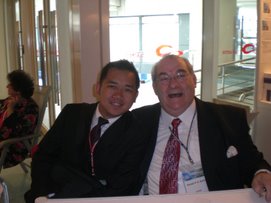The new paradigm: exit customer satisfaction . . . enter customer value.
Are you still placing your faith in "customer satisfaction?" If your answer is yes, you are trapped in an outdated mindset. The new paradigm is customer value - and it's quickly being embraced by forward thinking corporations everywhere.
So what makes the customer satisfaction paradigm so, well, unsatisfying? Here are four solid reasons:
- Satisfaction does not equate to market share. If a customer is satisfied, he is happy, if dissatisfied, he is unhappy. The satisfaction paradigm is predicated on the assumed linkage between happiness and loyalty, a linkage that can be deceptively reassuring. Customer Satisfaction is not a good predictor of performance and being able to link a strategic measure such as satisfaction or value to performance is paramount.
- Satisfaction is based on what customers expect. When a customer's expectations are met, she might say she is satisfied. But is merely meeting her expectations good enough. "What is it that customers want to be satisfied with?" Is it each and every attribute or is it something more profound, something that takes into account the way in which most customers make a choice decision? We believe it's the latter.
- Satisfaction does not address the "worth it" question. Consider a simple example: a fine dining experience. After trying out a nice restaurant for the first time, you evaluate your experience. Typically you would evaluate individual aspects of the experience such as the atmosphere, the service, the quality of the food, the quantity of the food, perhaps parking and any other factors. Usually you will evaluate all of those factors and then look at the performance of the restaurant relative to the price that you paid to experience those factors. At the end of the day, you are asking whether the dining experience was "worth it." The "worth it" question is the essence of value.
- Satisfaction fails to acknowledge the competition. Many organizations focus their customer satisfaction system solely on their own customers. In the process, they are ignoring what their competitors are doing. This can lead to the trap where customer satisfaction scores are increasing or remaining high but the organization is losing market share. No competent military general goes into battle without understanding the disposition of the enemy's troops and their strengths and weaknesses. Unfortunately, many organizational generals do.











No comments:
Post a Comment